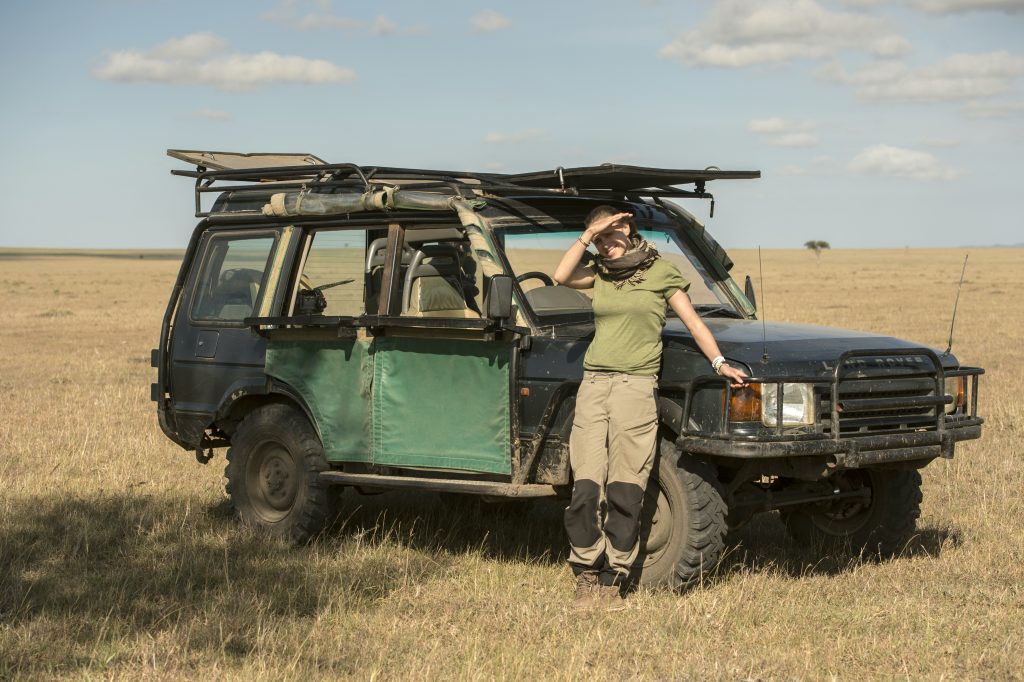← Back
Nina Siemiatkowski, Photographer/Conservationist
Interview, 21 November 2018
At a first glance, it appeared as if Nina Siemiatkowski had it all.
But in spite of graduating from Stockholm’s most prestigious business school, having climbed the corporate ladder at a publicly traded company, where she landed the position of Marketing Director at the tender age of 29, something was missing.

During her photography studies, an assignment from one of her mentors triggered a fascination for documenting the unvarnished reality of everyday lives. A project that proved to be both challenging and deeply meaningful.
Intrigued by the vague idea that only the human condition warrants for an interesting story, combined with her love for the African wilderness, led her to the vast plains of Kenya’s Maasai Mara national reserve.
Here she would come to spend the following months, documenting and living in close proximity to a pride of lions, which eventually materialized into the exhibition “Book of Leon”. A project that taught her a great deal about herself, family values, laws of nature and the art of co-existence.
Today, as a mother of three and many experiences richer, Nina Siemiatkowski juggles her days with one foot in the entrepreneurial world of her hometown of Stockholm, and one still very much in the world of wildlife conservationism. We met up with her for a candid conversation about ambition, expectation, photography and the fact that it’s never too late to start over.
You were appointed Marketing Director for Swedish Match at age 29 but left the position to pursue a dream of becoming a photographer. Can you take us through the thought process that lead you to making that decision?
– I had a dream of becoming a CEO of a
So, I sat down with my calendar one day and went back every single day for the past six months, categorizing each day as being fun or not fun. At the end of my
– I started asking myself if there was something wrong with my attitude, so I got a hold of a coach who I started seeing and, sure enough, it turned out that there was absolutely nothing wrong with my attitude. On the contrary, my attitude was quite sober, and I realized that I had to make a change.
What sort of reactions did you get after walking away from a high paying corporate position?
– People seemed genuinely happy for me. Some, mostly people in the same position as me, were perhaps a little jealous that I had taken a step most of them had only thought about. But mainly, people told me they were inspired and happy for me. That me taking that leap of faith had enabled them to start similar thought processes, which was nice to hear.

What stopped you from pursuing a life in photography earlier on?
– I have a simple answer to that question which is: I was too afraid. I had really good grades and applying for business school seemed obvious at the time. For me, becoming an assistant to a photographer immediately out of high school was associated with so much fear of being rejected or critiqued that I told myself to play it safe and perhaps pursue my passion later in life.
How did you come up with the concept for “Book of Leon”?
– I think there were two essential things that happened: One was that after resigning from my job at Swedish Match, I had a six month leave of notice over the summer where I met an amazing photographer named Pieter ten Hoopen. I managed to convince him to bring me on as his assistant and he invited me down to a small Swedish town called Hjo.
When I got there, he gave me
– The other thing leading up to “Book of Leon” was when I sat down with a revered Swedish art critic to go over my portfolio at the end of my photo studies. It contained some of my portraits of the girls in Hjo and other works, and he was very impressed and gave me lots of praise. At the end of my
After the
So, what was the next step at that point?
– Well, I learned that I was pregnant. The original idea was to go down to Maasai Mara and spend six months with this pride of lions, but
“Conservation at its core is never about animals, it’s always about humans. About human interaction with nature.”

Fore more please visit:
www.bookofleon.com
Note: 20% of all proceeds during Black Friday-weekend will be donated to the Zambian Carnivore Program and their mission to protect local wildlife